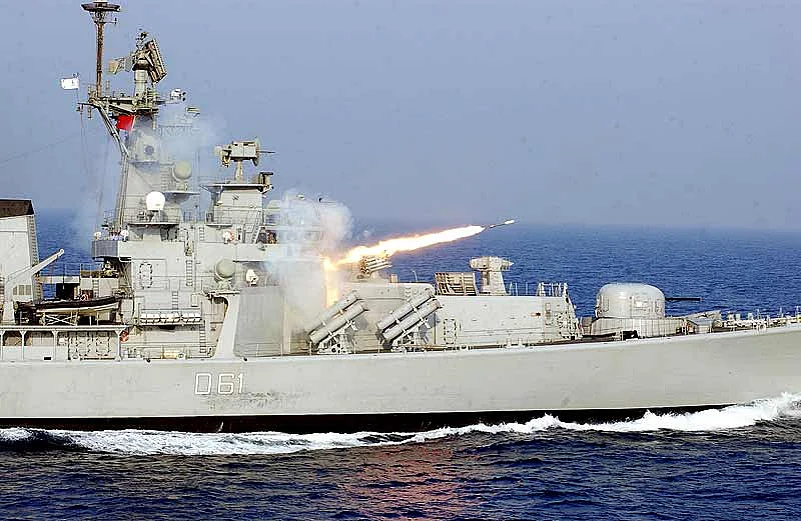India’s economic destiny is now firmly and irrevocably anchored in East Asia. Trade and investment flows between India and the region, including China, constitute the most dynamic component of its external economic relations. Therefore, it is no surprise that at the recent East Asia Summit in Phnom Penh, India opted for the proposed Regional Comprehensive Economic Partnership (RCEP), which includes the 10 ASEAN countries plus China, South Korea, Japan, Australia and New Zealand, rather than the US-sponsored Trans-Pacific Partnership (TPP),which excludes China. In the economic sweepstakes, China clearly holds the winning cards. The contours of a new regional economic architecture are now taking shape and China is likely to be its central pillar. India clearly wants to be a part of this.
While there appears to be an overall consensus among the countries of the region on the need to maintain and strengthen a relatively open and liberal trade and investment regime, this is not reflected in their security perceptions, including within ASEAN itself. In announcing its ‘pivot’ or rebalancing towards Asia, the US seeks to maintain its forward deployments in the region, strengthen its existing alliances with Japan, South Korea and Australia and shift the main focus of its global military presence to the region even as it winds down its forces in the Middle East and Afghanistan. This brings the US into increasing confrontation with China, which interprets these moves as aimed at its containment. That the US president chose to visit Asia soon after his re-election and included Myanmar on his itinerary only serves to strengthen Chinese suspicions. The countries of the region are caught in between. The strains among ASEAN countries are already apparent. They wish to avoid a polarised situation in which some will choose to side with the US, others with China. This goes against the logic of economic interdependence, as reflected in the proposed RCEP. But neither do they wish to see Chinese dominance limit their own room for manoeuvre. There is, therefore, a growing and potentially destabilising asymmetry between the emerging economic architecture and the lack of consensus on what the emerging security architecture should look like.
What could be India’s contribution to the framing of credible and effective security arrangements in the region? One, India has declared that in any emerging regional security architecture, ASEAN’s centrality and institutional role should be acknowledged. This is because ASEAN literally sits in the middle of this vast region. It lies at the intersecting points of all the major Indo-Pacific sea lines of communication. More importantly, it is a useful buffer between contending major powers and a forum where competing interests could be managed, if not always reconciled. The ASEAN Defence Ministers’ Meeting plus Eight (ADMM Plus) brings together members of the group together with all major stakeholders viz China, India, the US, Russia, Japan, South Korea, Australia and New Zealand, to discuss regional security issues. India has strongly supported this initiative. In the recently released report of the India-ASEAN Eminent Persons’ Group, this aspect is explicitly recognised: “India will continue to support ASEAN as the driving force of both economic and security structures and institutions that are currently emerging in the region, based on the centrality of ASEAN.” It is the same logic which has led the two sides to elevate their relations to a Strategic Partnership, which was announced at the India-ASEAN Commemorative Summit in December. Two, while considering the security challenges which confront the region, India has emphasised maritime security as the key element. This is because for India as well as the countries of the region, including China, the safety and security of the sea lines of communication (SLOC) have become critical to maintaining and promoting their hard-won economic prosperity. Over 90 per cent of the external trade, in particular, energy resources, of most of the countries in Asia is now sea-borne. The Indo-Pacific is now the most densely traversed maritime route. In this context, India has been a strong proponent of a maritime security regime which provides mutual reassurance to all the stakeholders. This is fully reflected in the recommendations of the Eminent Persons’ Group: “ASEAN member-states and India, being maritime nations whose prosperity throughout history has been linked to sea-faring and sea-borne trade, to work together to ensure maritime security and freedom of navigation to littoral and user countries, in accordance with international law and on the basis of open, inclusive, transparent and balanced multilateral arrangements in the region.” This proposed mechanism for providing mutual assurance is preferable to a competitive military, in particular, naval build-up which is already beginning to take place among the countries of the region.

Manmohan links hands with his counterparts at the India-asean summit, December 20, New Delhi
Three, until a stable regional security architecture emerges, India seeks to strengthen its engagement with all the major powers present in the region and this includes the US, China, Japan, Australia, South Korea and ASEAN (both bilaterally and collectively). With China, a regular maritime dialogue has been established. This will go hand in hand with the steady expansion of India’s maritime capabilities.
These publicly declared elements of India’s approach to regional security in Asia demonstrate that our preference is for a multilateral structure in which no major power has a dominating presence, let alone a veto over others. Should there be such a tendency, say on the part of China, India will inevitably gravitate towards a countervailing coalition which would be opposed to such unilateral assertion of power. But this would be the default option. The preference would be for security arrangements where China, no less than the US or India, would be ready to accept the discipline of a multilateral code of conduct.
What are the prospects for a consensus being evolved on multilateral security arrangements in the region? They are pretty bleak for several reasons. One, the rapid emergence of China as a major economic and military power has upset the deeply entrenched US-led regional order. As China’s economy becomes more globalised and interconnected with other economies in the region and the world, there will inevitably follow a concomitant expansion in its military capabilities, to safeguard these economic lifelines. Others will do the same. The rules of the game that are essential to deal with a more crowded space are missing.
In China, there is additionally an element of ambition engendered by a sense of opportunity. This comes from a pervasive perception that the US is in relative and probably terminal decline, creating space for China to enhance its Asian as well as global stature. This is reinforced by a sense that China is only regaining its historical status as the pre-eminent power in Asia, with a share of global GDP of roughly 25-30 per cent, which it enjoyed right up to the beginning of the 19th century. However, medieval China was mostly a self-sufficient and self-contained empire with a periphery of weak and, in comparison, less civilised states. Today, China’s emergence is anchored in a very different, interdependent and interconnected global economy and an Asia now home to a cluster of major powers. If China claims pre-eminence as a historical entitlement, as it seems to do on occasion, it will invite a strong pushback.

Antony with his Chinese counterpart Liang Guanglie
Two, there remain festering territorial disputes in region, which are often overlaid by historical and emotional factors. In northeast Asia, these include the Russia-Japan dispute over the Kurile islands; the escalating tensions on the Korean peninsula with an increasingly unpredictable but heavily armed nuclear North Korea and the Sino-Japanese dispute over the Senkaku islands. The status of Taiwan, which China considers a renegade province, remains unresolved even though relations across the Taiwan Straits have improved of late. In the South China Sea, there are disputes between China on the one hand and the Philippines, Vietnam, Malaysia and Brunei, on the other. There are territorial disputes among some of the ASEAN countries themselves. This long list creates several intersecting points of potential armed conflict. China’s recent assertiveness on these territorial issues has only sharpened the atmosphere of mutual distrust and suspicion. A new leadership has taken charge in Beijing. Its first moves are not reassuring. Controversy has erupted over the issue of new passports with maps which show Chinese land as well as maritime claims in their maximal version. India’s Aksai Chin and Arunachal Pradesh are shown as Chinese territory. The South China Sea is depicted with the infamous nine-dotted line, turning it into a virtual Chinese lake. India and others have reacted strongly.
There are now reports that as of January 1 next year, Chinese naval police reserve the right to board and inspect foreign vessels in the area claimed as Chinese territorial waters. This has already generated alarm in ASEAN and other countries in the region. These actions strengthen perceptions that the incoming leadership in Beijing is likely to be more nationalistic and assertive, setting the stage for heightened tensions and confrontation. India may find itself pushed towards a much tighter countervailing coalition to confront the inimical exercise of Chinese power than the more flexible and loosely structured security architecture that it favours. Unless these issues are managed with statesmanship and skilful diplomacy, there is every danger that Asia’s economic rise may be derailed before the full promise of regional prosperity is achieved.
Shyam Saran is a former foreign secretary. He is the India Co-Chair of the India-ASEAN Eminent Persons’ Group.






















